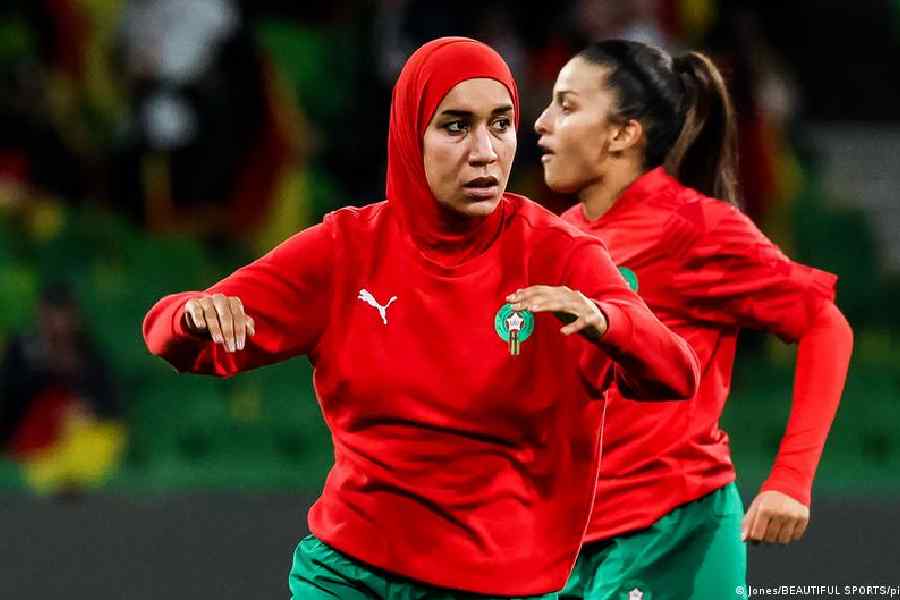The first appearance of a female footballer wearing a hijab at a World Cup has been a long time coming.
Nouhaila Benzina was in Morocco's squad for the North Africans' opening match against Germany but did not feature in their 6-0 defeat. The 25-year-old defender has Canada's Asmahan Mansour to thank for her chance to play in the World Cup.
In 2007, the then 11-year-old made headlines around the world. Mansour wanted to take part in a local football tournament in the city of Laval with her team from Ottawa. When she appeared wearing a hijab, the referee asked her to take off her headscarf, referring to the rules of world governing body FIFA. Mansour refused, and her team left the tournament in protest.
Mansour and the Canadian Football Association appealed to FIFA which confirmed its ban on the hijab, citing two arguments. On the one hand, the headscarf could lead to injuries and was therefore dangerous. Secondly, FIFA argued, it violates the rule that "basic compulsory equipment must not have any political, religious or personal statement."
Critics argued that there was no evidence of a security risk and that FIFA was applying double standards in matters of religion. They said that FIFA had nothing against religious gestures by players, such as making the sign of the cross before the start of a match, before a penalty kick or when celebrating a goal. But FIFA remained firm.
Before the 2010 Youth Olympic Games in Singapore, it banned an Iranian junior women's team from playing in the tournament because the players wanted to wear the hijab. Eventually they were allowed to play, wearing caps instead of headscarves. In 2011, FIFA also banned the Iranian women's national football team from wearing a hijab at an Olympic qualifier in Jordan.
At that time, however, there were already signs of a change of course. The Jordanian Prince Ali bin al-Hussein, who had been appointed FIFA Vice-President at the beginning of 2011 to represent Asia, was responsible for this change. With him, hijab supporters got a foot in the door of FIFA decision-makers.
In 2012, the International Football Association Board (IFAB) - the international body that overseas the game's rules - decided on a two-year trial period for matches with an "athletic hijab."
Designers from the sporting goods industry had developed a tight-fitting headscarf that finally allayed FIFA's safety concerns. "There is no medical literature concerning injuries as the result of a headscarf," the IFAB ruled. The hijab could therefore not be classified as "dangerous" - as FIFA had done until then.
After the trial period, the IFAB allowed the hijab for international matches in 2014. At the U17 World Cup in Jordan in October 2016, Tasneem Abu-Rob and Rand Albustanji from the host team were the first female footballers to wear headscarves at a FIFA tournament.
In Australia and New Zealand, Morocco's Nouhaila Benzina could go a step further, but there is still work to be done, including in France, where the hijbab is still banned in football.
At the end of June, the Council of State (Conseil d'Etat) declared the headscarf ban at football matches to be legal. The French Supreme Administrative Court ruled that the FFF's requirement to dispense with the hijab was "appropriate and proportionate."
The Council of State said sports federations "may impose on their players an obligation to wear neutral clothing during sporting competitions and events, in order to guarantee the smooth running of matches and prevent clashes or confrontation. It considers that the ban imposed by the FFF is appropriate and proportionate."
A complaint was filed by "Les Hijabeuses", a group founded in 2020 to campaign for women footballers to be allowed to wear the hijab in France. The activists are supported, among others, by French ex-male stars such as Eric Cantona and Lilian Thuram.











